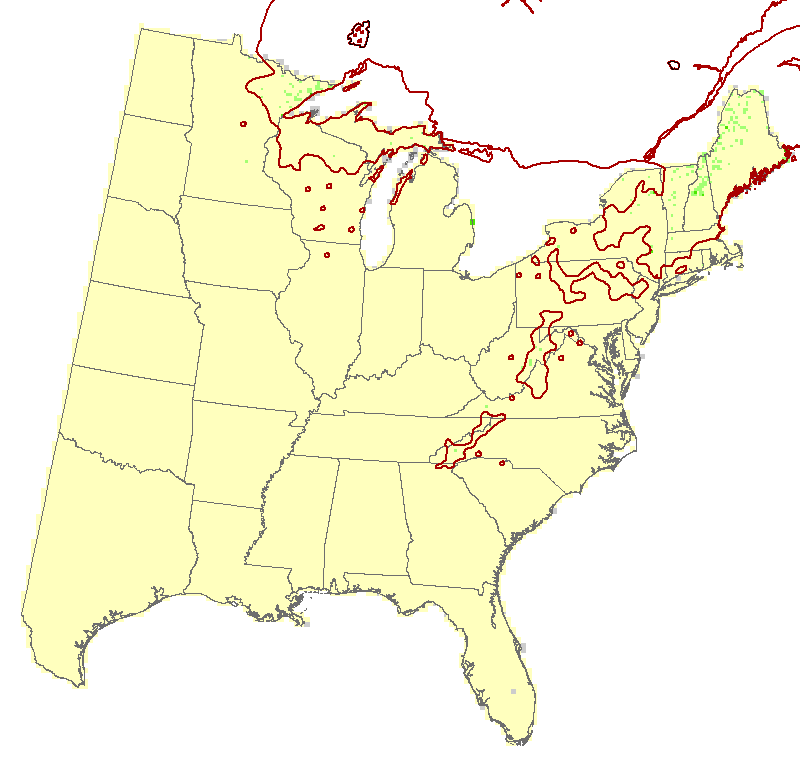American mountain-ash (Sorbus americana)
Model Reliability: Low
| GCM SCENARIO | % Area Occ | Ave IV | Sum IV | Future/Current IV |
|---|---|---|---|---|
| Actual | 0.7 | 0.9 | 164 | N/A |
| RFimp | 1.1 | 0.2 | 74 | 0.45 |
| CCSM45 | 0.7 | 0.1 | 28 | 0.38 |
| CCSM85 | 0.8 | 0.1 | 21 | 0.29 |
| GFDL45 | 0.4 | 0.2 | 20 | 0.27 |
| GFDL85 | 1.2 | 0.1 | 20 | 0.28 |
| HAD45 | 0.9 | 0.1 | 25 | 0.34 |
| HAD85 | 1.8 | 0 | 23 | 0.31 |
| GCM45 | 1.4 | 0.1 | 25 | 0.34 |
| GCM85 | 2.1 | 0 | 21 | 0.29 |
Regional Summary Tree Tables
Summaries for tree species are available for a variety of geographies, in both PDF and Excel format. These summaries are based on Version 4 of the Climate Change Tree Atlas
Interpretation Guide
American mountain-ash is narrowly distributed (0.5% of area), sparse, and low IV. It is rare in the northern portion of the region. Its low reliable model suggests a large loss in habitat, and its adaptability is also low such that its rating for capability to cope with a changing climate is very poor. Effect of SHIFT is neglibible.
Family: Rosaceae
Guild: understory tolerant, slow growing
Functional Lifeform: small deciduous tree
| 3.1 | -0.23 |
| -1.62 |  |
MODFACs
What traits will impact American mountain-ash's ability to adapt to climate change, and in what way?:
Primary Positive Traits
Primary Negative Traits
Fire topkill Shade tolerance Environment habitat specificity



